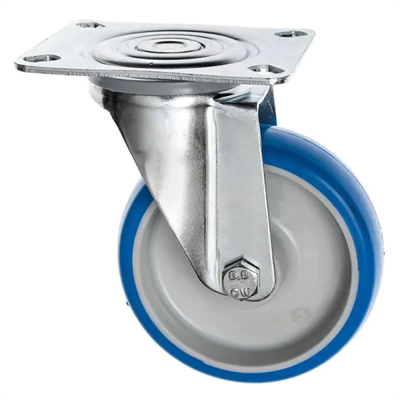DIY enthusiasts often use casters to make various projects more mobile and versatile. Whether you’re working on home improvement, woodworking, or crafting, here are some caster options and tips for DIY projects:
1. Types of Casters:
- Swivel Casters: These casters can rotate 360 degrees, providing excellent maneuverability. Swivel casters are great for projects that require easy direction changes.
- Rigid Casters: These casters do not swivel and move only in a straight line. They provide stability and are ideal for projects where movement in a fixed direction is needed.
- Locking Casters: Some casters come with locks to keep them in place when needed.
2. Wheel Materials:
- Consider the wheel material based on your project needs. For indoor DIY projects, rubber or polyurethane wheels are suitable for protecting floors and providing smooth movement. For outdoor projects or heavy loads, consider wheels made of durable materials like metal or pneumatic wheels.
3. Weight Capacity:
- Choose casters with an appropriate weight capacity for your DIY project. Ensure that the combined weight of your project and materials does not exceed the caster’s capacity.
4. Mounting Options:
- You can choose casters with different mounting options, including plate casters, stem casters, and threaded stem casters. Select the one that best suits your project.
5. Brake Mechanisms:
- Depending on your DIY project, you may want casters with brakes to secure the project in place when needed. There are various brake options, such as wheel brakes, total lock brakes, and directional locks.
6. Size and Diameter:
- The size and diameter of the caster wheels affect mobility and load distribution. Larger wheels can roll more easily over obstacles and uneven surfaces. Consider the space where your DIY project will be used to choose an appropriate size.
7. Noise and Floor Protection:
- Some wheel materials are quieter than others and can protect flooring surfaces from damage. Rubber and polyurethane wheels are often chosen for their noise-reducing and floor-protecting qualities.
8. Specialty Casters:
- For specific DIY projects, such as woodworking, you can find casters designed for heavy loads, high-temperature environments, and more. Some casters are even made for use on delicate floors or in cleanroom settings.
9. Safety and Stability:
- Ensure that the casters you choose provide stability and safety for your DIY project. Proper caster selection can prevent accidents and ensure the project’s safety.
10. Maintenance: – Regular maintenance, including cleaning and lubricating the caster wheels, is essential to prolong the life and performance of your casters.
Casters can be a valuable addition to DIY projects, making them more mobile and versatile. Whether you’re building a workbench, a movable storage unit, or any other project that needs mobility, selecting the right casters ensures that your DIY creations are not only functional but also easy to move and use.


